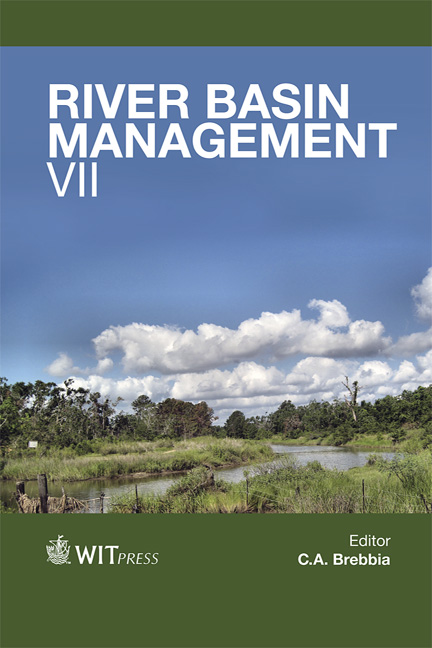Comparison Of Clear Water Flow And Sediment Flow Through Bottom Racks Using Some Lab Measurements And CFD Methodology
Price
Free (open access)
Transaction
Volume
172
Pages
11
Page Range
227 - 237
Published
2013
Size
597 kb
Paper DOI
10.2495/RBM130191
Copyright
WIT Press
Author(s)
L. Castillo, J. Carrillo & J. García
Abstract
Bottom water intake systems consist of a rack located on the stream bed, so that water passes through the rack to be collected. These structures are used in small mountain rivers with steep slopes and irregular riverbeds, in which intense sediment transport and flood flow are found. These racks are designed to derive as much water as possible with the minimum retention of solids. Some attention has been given to the occlusion of racks due to the deposition of debris over them or to the quantity of sediment that gets into the rack and is transported along the derivation channel. Nowadays what we want is to optimize this kind of intake to use them in discontinuous and torrential streams with a high concentration of sediment. The methodology of Computational Fluid Dynamics (CFD), which is based on numerical solution of the Reynolds Averaged Navier-Stokes (RANS) equations together with turbulence models of different degrees of complexity, simulates the interaction between different fluids, such as the sediment-water two-phase flows that appear in intake systems. This paper compares the main results obtained in clear water flow and sediment flow through a rack, using some laboratory results and CFD methodology. Keywords: bottom intake system, racks, lab, sediment, CFD.
Keywords
Keywords: bottom intake system, racks, lab, sediment, CFD.





